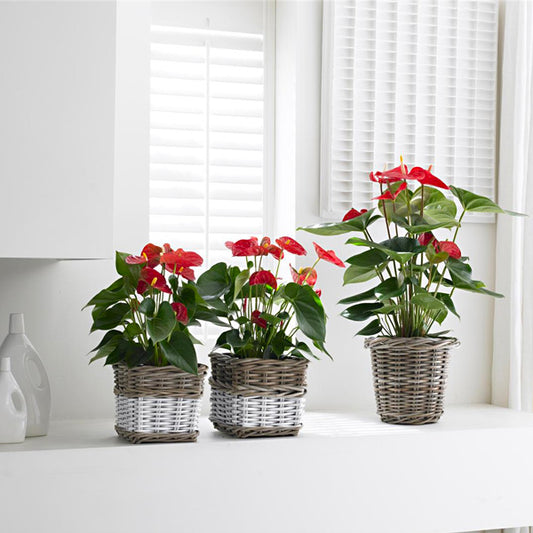Heat-tolerant cymbidiums (HTC) are cymbidiums that will grow and bloom in a tropical climate where there is no drastic drop in day & night temperatures. In contrast, the standard cymbidiums require the night temperature to drop to below 8 degrees in winter to initiate blooms. These cymbidium hybrids are the result of hybridizing the tropical cymbidium species like C. ensifolium, C. aloifolium, C. canaliculatum etc. with the cold-growing species.
Light
One of the most important factors for an HTC to bloom is light. The ideal would be about 6-8 hours of 60% sunlight. During the hot summer months, shading will have to be increased to about 50% for best results. Plants that are grown in low-light conditions will have dark-green leaves and lush vegetation. Further, hybrids of the hard-leaved cymbidium species like C. aloifolium and C. canaliculatum can tolerate higher amounts of light and some of them can tolerate a few hours of direct sunlight too.
Water
HTCs are very sensitive to watering. They don't like to stay soggy and waterlogged for extended periods, though the root ball must never go dry too. Constantly wet roots are an invitation for fungal and bacterial diseases. The media must be very free draining so that water does not stagnate. The hard-leaved cymbidiums in their parentage require lesser watering and enjoy drying out between watering.
Temperature
Most of them do best at temperatures between 15-35 degrees Celsius. At this temperature, they will bloom several times a year. In a truly tropical setting, they usually have two peaks, one during winter when the temperature drops ever so slightly and another at the onset of the monsoons when temperatures drop again. HTCs, because they have been bred to bloom in the tropical lowlands might not do well in regions where the temperatures drop below 10 degrees Celsius for extended periods of time.
Humidity
HTCs are not very particular about humidity; however, the leaves should be washed down at least every alternate day to prevent spider mites from colonizing your plants. Cymbidiums in general because of their flat, long leaves are an ideal breeding ground for spider mites. Spider mites detest staying wet and the best way to keep them in check is by increasing humidity.
Media and Fertilizer
Although most tropical cymbidium species except C. ensifolium are epiphytic, the terrestrial root type dominates when a hybrid is made using a terrestrial species. For this reason, it is better to grow HTCs in Kiwi Pine Bark. Use deep pots that are longer than they are broad as cymbidium roots tend to run deep. Media should be gradually filled with larger pieces towards the bottom of the pot. The pot should be gently wiggled so that no air spaces are formed within the pot. Water thoroughly and keep in a shady spot. Avoid watering for another week or so though the leaves can be misted often to keep them from dehydrating.
Adult plants can be fertilized using a balanced fertilizer like Bafoliar 91-19-19 SP fertilizer along with micronutrients or all-in-one fertilizer like Speciality Bio 20 and once a month using Basfoliar 13-40-13 fertilizer. Remember to give your plants enough light when you use a high nitrogen fertilizer to prevent rot.

